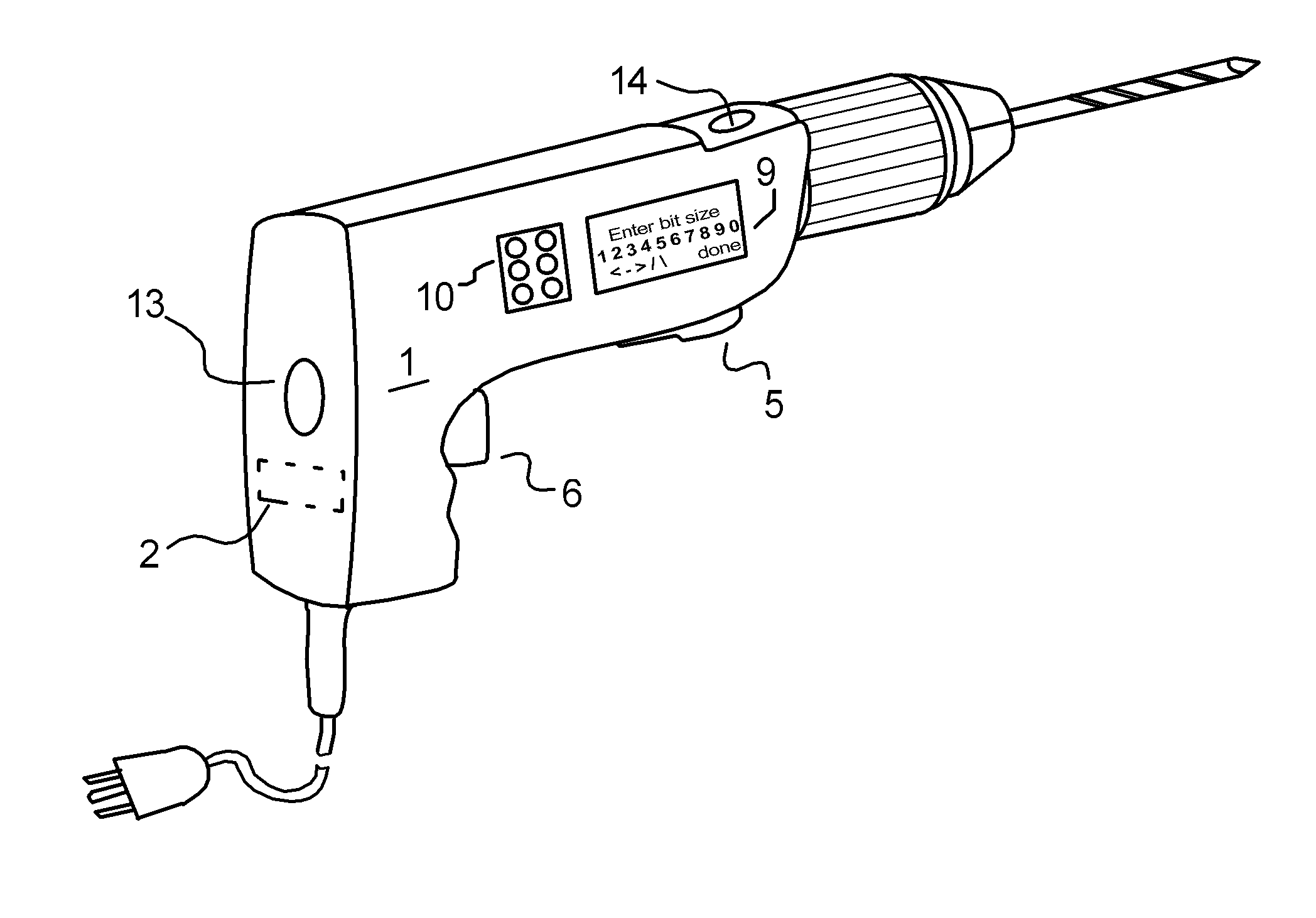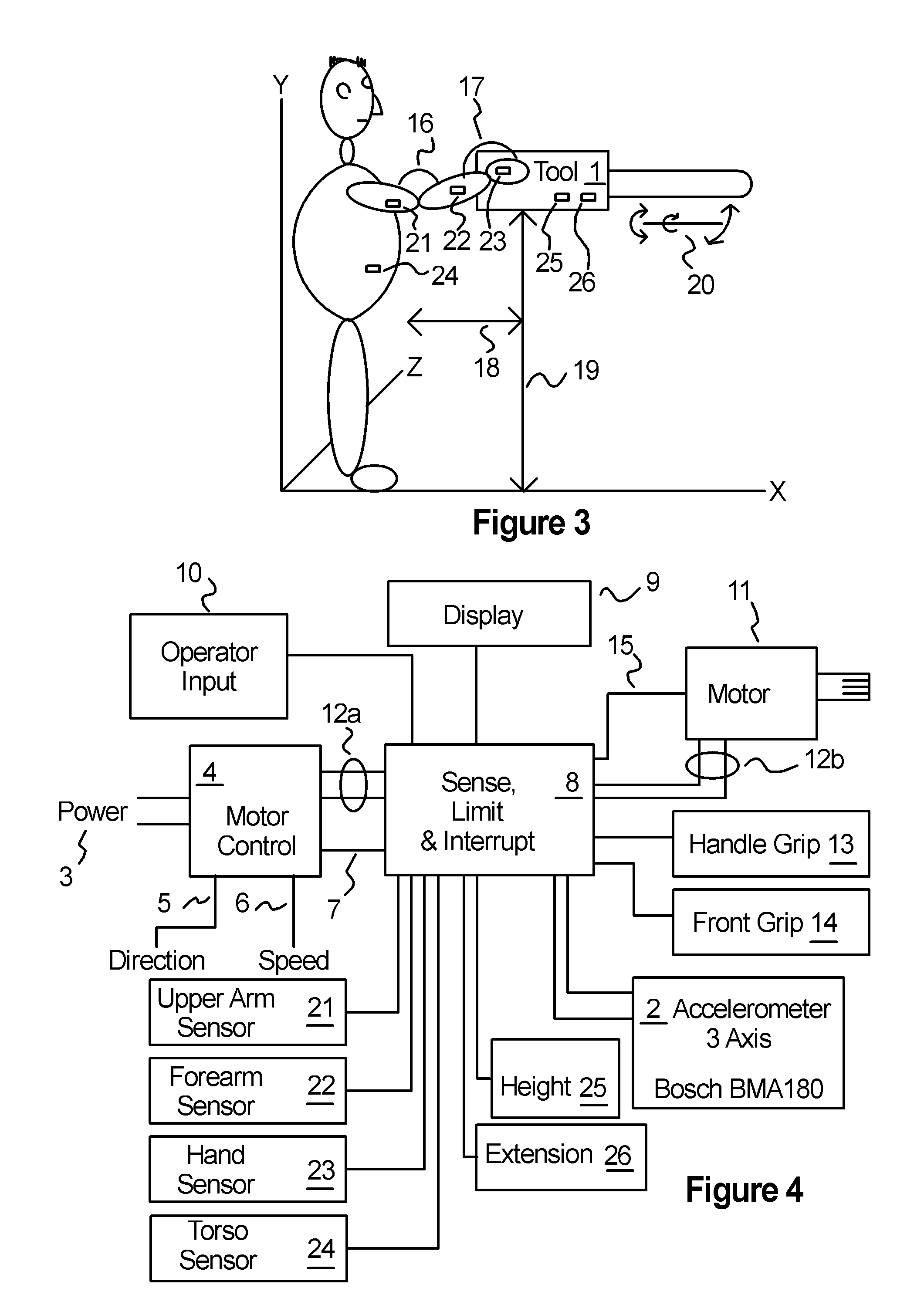For example a safety issue exists when drilling in work with a
hand held drill.
If the
drill jerks from the operator's hands it can injure the operator or a bystander, or cause damage to the
drill,
drill bit, work or surrounding items.
The operator strength needed to hold the drill increases as the drill torque increases, making large
horsepower or high gear reduction drills particularly troublesome.
Even if the operator manages to hold the drill, it can nevertheless
cause injury.
This potential for injury is especially true when the drill must be held with outstretched arms, overhead or in any awkward or unusual position.
If the drill is mounted to a work bench or the floor and the work is hand held or held using a tool or accessory such as pliers or clamp a similar danger exists as the bit can become stuck in the work causing the work, pliers or clamp to twist in the operator's hands or fly away.
Safety problems, injury or damage can occur with virtually any hand held tool or hand held work which has the potential to transfer injury or damage causing force to the operator, a bystander or surrounding items.
Problem can occur when the tool or the work is powered, for example when a hand held drill is used to drill a hole in a stationary piece or work, or when the work is chucked in a drill and held against a stationary tool.
Problems also can occur when the tool or work is not powered but is utilized with a powered device.
There are also problems when both the tool and work are held, for example when a drill or saw is held in one hand and the work is held with the other hand or a foot.
There are prior art devices which are intended to help with
power tool safety but these devices have problems such as with
operating speed and reliability under various working conditions.
These
clutch devices will also limit the reverse torque which the operator must contend with if the
tool bit or screw suddenly sticks in the work.
However in the description of the preferred embodiment there is no suggestion that the weight is designed to be easily changed or otherwise adjusted in response to, or to accommodate changes in the operation of the saw in a typical work environment.
These situations where the operator is operating the saw in a potentially more dangerous manner than when the work is secure are not adequately addressed by the Gassen device.
Gassen does not recognize the problem or otherwise provide any sort of provision for situations such as these or any other situations where the amount or direction of a dangerous “kickback” producing impulse or normal operating accelerations associated with operational and vibratory forces may be different in a typical
work setting in which the tool is operated in a variety of manners.
In addition the selection of the weight of the Gassen
accelerometer suffers from other limitations which make it undesirable for many tools.
Many of these limitations generally apply to the use of the mechanical weight type kickback limiting taught by Gassen.
Additionally Gassen utilizes a pivotable hand guard which has the potential to not perform as well as a fixed hand guard because of the difficulty of holding on to a pivotable guard as compared to a fixed guard.
The preferred embodiment Gassen device operates primarily in a single direction, i.e. in response to forces parallel to the chain motion which cause the weight to move, thus making it unsuitable for rotational forces such as those in a drill.
Another problem is the additional weight that the Gassen accelerometer
mass adds to the
chain saw.
And another problem is that the Gassen accelerometer only detects acceleration in one direction of movement in one axis (relative to the saw) and is sensitive to error introduced by the orientation of the weight and its suspension relative to the kickback forces and gravity.
Yet another problem is that the Gassen accelerometer does not take into account environmental considerations such as temperature which can affect the sensitivity of the actuating mechanism.
And still another problem is that it is not adjustable automatically or by the operator for different operating conditions, e.g. hard wood vs. soft wood vs. wet wood, the position of the operator and work and the manner in which the operator holds the saw and / or work and the strength of the operator.
 Login to View More
Login to View More  Login to View More
Login to View More 


